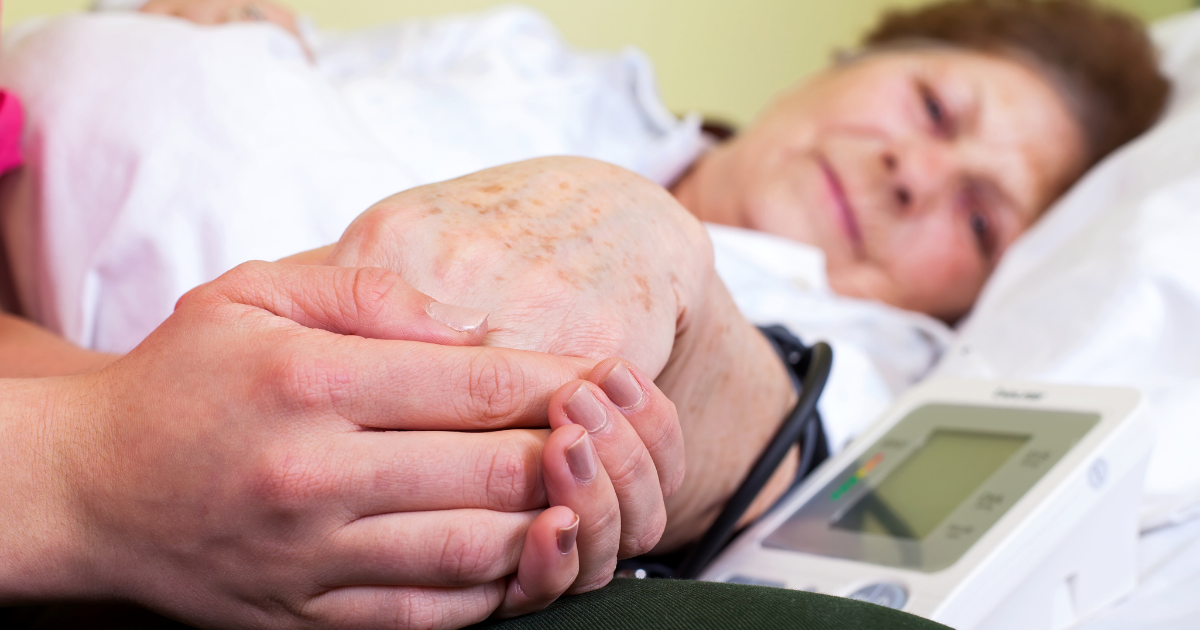Can I Pursue a Medical Malpractice Claim for Contracting Sepsis?
December 16, 2021
Sepsis is a serious, potentially life-threatening response to an infection. It is a common misconception that sepsis is an infection, but it actually occurs when the chemicals that the body releases to fight off an infection trigger an overwhelming inflammatory reaction. Although sepsis is rather common and treatable if it is identified and treated quickly, it can be extremely dangerous if the condition progresses. In extreme cases, sepsis can be fatal. Unfortunately, some of the common causes of sepsis are the result of medical errors and other types of negligence, including a failure to properly diagnose or treat the condition. If you developed sepsis while under the car of a health care provider, you are urged to contact a lawyer experienced in medical malpractice as soon as possible.
What Are the Most Common Causes of Sepsis?
Oftentimes, patients develop infections while they are in the hospital. These are known as hospital-acquired infections (HAI). Unfortunately, these are more common than you might think. According to the Centers for Disease Control and Prevention (CDC), approximately 722,000 patients were diagnosed with HAIs in one year in the United States. Close to 75,000 of those patients died in the hospital from severe sepsis or septic shock. Many of these cases could have been avoided if health care professionals and hospital staff took steps to prevent some of the common causes of sepsis, including the following:
- Scalpels, gloves, and other surgical tools that have not been properly sanitized.
- Bacteria from unsanitary intravenous lines get into the bloodstream.
- Bed sores become infected after the patient has not been properly cared for or moved.
- The patient’s surgical wound has not been properly cleaned during the post-procedure care.
- Health care professionals failed to properly wash their hands.
- Health care professionals failed to properly diagnose the sepsis, which left the condition untreated.
- Surgical instruments, gauze, or other foreign objects were left inside the body.
Who Is at the Greatest Risk for Developing Sepsis?
Any infection can develop into sepsis, including infections involving the skin, urinary tract, lungs, or gastrointestinal tract. When the infection is not properly diagnosed or treated, it can develop into sepsis, which can cause serious health complications, including damage to tissue, organs, kidneys, the heart, and the brain. In extreme cases, patients can go into complete organ failure. The following are examples of infections that are more likely to develop into sepsis:
- Pneumonia
- Urinary tract infections
- Kidney or bladder infection
- Digestive system infection
- Bloodstream infection
Although anyone can develop sepsis if an infection is not properly diagnosed or treated, there are certain people who are at an increased risk for developing the condition, including the following:
- Adults over the age of 65
- Hospital patients who have open wounds or bedsores
- Patients who rely on catheters or breathing tubes
- Patients who have a weakened immune system
- Patients who have had previous infections and were treated with antibiotics or corticosteroids
- Patients who suffer from chronic diseases such as cancer, diabetes, kidney disease, or lung disease
- Women who are pregnant
- Children under the age of one
What Are the Common Symptoms of Sepsis?
If you develop sepsis as a result of medical negligence, you may not know that your health care provider made a mistake until you start to display symptoms associated with sepsis, including the following:
- Elevated heart rate
- Fever or hypothermia
- Shaking or chills
- Warm, clammy, or sweaty skin
- Confusion or disorientation
- Hyperventilation or shortness of breath
There are three stages of sepsis, each of which has its own specific symptoms. It is imperative that health care providers diagnose sepsis in its early stages, since the condition becomes much more serious and more difficult to treat as it progresses. Sepsis, which is the earliest stage, involves a temperature of less than 96.8 degrees Fahrenheit or a fever of more than 101 degrees Fahrenheit. Other symptoms include a breathing rate of more than 20 breaths per minute and a heart rate of more than 90 beats per minute. Severe sepsis is the second stage of the condition. Patients will show symptoms of organ failure, which may include a significant decrease in urine output, abdominal pain, difficulty breathing, abnormal heart pumping, or a sudden change in mental status. Septic shock is the final stage of sepsis. It is extremely serious and often fatal. The patient usually experiences an extreme drop in blood pressure and the body no longer responds to intravenous fluid replacement.
When Is Sepsis Considered Malpractice?
Although sepsis often occurs in a hospital setting, it is not always the result of medical negligence. For you to have a successful malpractice claim, you must be able to prove the following factors:
- A doctor-patient relationship existed.
- Your health care provider was negligent.
- The doctor’s negligence caused your injury.
- Your injury resulted in damages.
If you can prove these factors, you may have a claim for malpractice. Most medical malpractice claims fall into three categories, including failure to diagnose, improper treatment, and failure to warn patients of known risks. If another competent health care provider would have properly diagnosed your condition or made a different diagnosis that would have had a better outcome than the care provided by your doctor, you may have a viable medical malpractice claim. You may also have a valid claim if your doctor pursued a treatment protocol that no other health care provider would have followed, or he or she administered the treatment incompetently. Finally, health care providers have a duty to warn patients about any known risks associated with a procedure or course of treatment. If you would have elected not to proceed with a treatment or medical procedure after being warned of the potential risks, but your health care provider failed to discuss these risks with you, you may have a viable medical malpractice claim. The following are additional examples of common causes of medical malpractice for patients who are suffering from sepsis:
- Failure to recognize that the patient has an infection
- Failure to take the necessary blood, urine, and wound secretion tests
- Failure to provide the patient with the appropriate antibiotics
- Failure to thoroughly clean and sanitize the intravenous lines
- Failure to provide patients with the necessary fluids
- Not providing patients with other medical treatments that could help with recovery or prevent infections, including catheters, corticosteroids, and renal replacement therapy
- Not obtaining the necessary informed consent from the patient, or informing the patient about treatment protocols and infection prevention recommendations
- Prematurely discharging a patient who has an infection
What Should I Do if I Developed Sepsis as a Result of Medical Negligence?
Sepsis is an extremely serious, potentially fatal condition that can be prevented or effectively treated with appropriate medical care. If the health care professional responsible for your care failed to properly diagnose the condition or proceed with the recommended treatment protocol, you may file a medical malpractice claim against the hospital or the health care provider. To reach a successful medical malpractice settlement, it is highly recommended that you contact a highly skilled medical malpractice lawyer as soon as possible. He or she will assist you with every step of the claim process, determine who is responsible for the negligent medical treatment, and secure the best possible settlement offer based on your injuries.
For What Damages Am I Entitled if Sepsis Was Caused by Medical Malpractice?
Sepsis is an extremely serious medical condition that can take a significant amount of time to recover from, even if it was caught early. After you have been released from the hospital, you may experience a range of symptoms, including fatigue, aches and pains, loss of appetite, breathlessness, and difficulty sleeping. In some cases, the trauma of the experience can cause you to feel anxious, depressed, frustrated, and unable to complete simple, everyday tasks. This may prevent you from being able to return to work or regain normal daily activities. In addition, the costs associated with the time spent in the hospital and the follow-up medical care are extremely costly. A successful medical malpractice claim will ensure that you receive the following damages:
- All medical expenses associated with the condition, including hospitalization, doctor visits, prescription medications, and physical therapy
- Lost wages, including future loss of earning capacity
- Pain and suffering
- Loss of consortium
- Loss of enjoyment of life
- Wrongful death benefits if a family member suffered from a fatal case of sepsis or septic shock
Baltimore Medical Malpractice Lawyers at LeViness, Tolzman & Hamilton Seek Justice for Victims of Sepsis-Related Malpractice
If you or a family member developed sepsis while under the care of a health care professional, do not hesitate to contact the Baltimore medical malpractice lawyers at LeViness, Tolzman & Hamilton. We will conduct a thorough investigation into the details of your case, determine who is liable for your injuries, and secure the financial compensation for which you are entitled. Protecting your rights is our top priority. We will continue to fight for you until you are completely satisfied. To schedule a free, confidential consultation, call us today at 800-547-4LAW (4529) or contact us online.
Our offices are conveniently located in Baltimore, Columbia, Glen Burnie, and Prince George’s County, where we represent victims throughout Maryland, including those in Anne Arundel County, Carroll County, Harford County, Howard County, Montgomery County, Prince George’s County, Queen Anne’s County, Maryland’s Western Counties, Southern Maryland and the Eastern Shore, as well as the communities of Catonsville, Essex, Halethorpe, Middle River, Rosedale, Gwynn Oak, Brooklandville, Dundalk, Pikesville, Parkville, Nottingham, Windsor Mill, Lutherville, Timonium, Sparrows Point, Ridgewood, and Elkridge.






